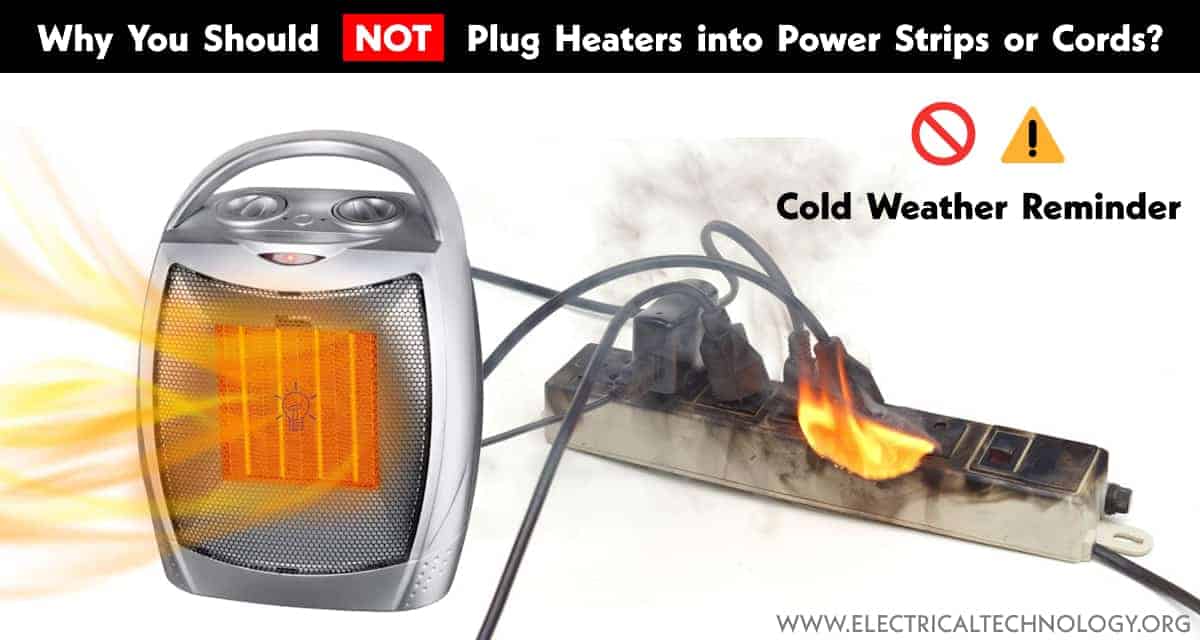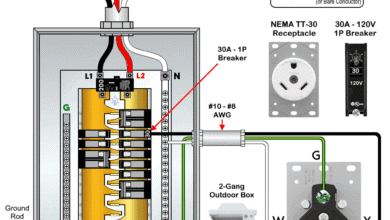Why Avoid Plugging Space Heaters into Power Strips or Extensions?
Why Space Heaters Should Not Be Plugged into Power Strips or Extension Cords?
It is a cold weather reminder that you should NOT plug space heaters into power strips or extension cords. Power strips are not designed to handle the high amperes of current required by the space heater. This may cause overheating and lead to a hazardous fire. For proper safety and life saving protection, plug the space heater directly into the wall outlet (socket). This way, the high wattage required by the heater will be safely managed by the dedicated circuit breaker.
Plugging space heaters into power strips or extension cords can be dangerous and is generally not recommended for several reasons:
- Overloading Circuits: Space heaters typically draw a significant amount of power, and using a power strip or extension cord that is not designed to handle the heater’s wattage can overload the circuit. This can lead to overheating, melting of insulation, and potentially cause a fire.
- Fire Hazard: Space heaters generate heat, and if they are not used properly, they can pose a fire hazard. Power strips and extension cords may not be designed to handle the high current load of a space heater, leading to overheating and increased risk of fire.
- Voltage Drop: Using long extension cords or power strips with inadequate wire gauge for a space heater can result in voltage drop. This can affect the performance of the heater, reducing its efficiency and potentially causing damage to the appliance.
- Inadequate Wire Gauge: Space heaters often require a higher current than other household devices. If the extension cord or power strip has a lower wire gauge than needed, it may not be able to handle the current, leading to overheating and creating a fire hazard.
- Manufacturer Recommendations: Most space heater manufacturers explicitly advise against using extension cords or power strips. Deviating from these recommendations can void warranties and compromise the safety of the appliance.
- Code Violations: In many regions, using extension cords or power strips in this manner may violate electrical codes and regulations. It’s important to follow local building codes to ensure the safety of your electrical setup.
Related Posts:
- Which One Kills – Current or Voltage and Why? Amps vs Volts
- AC or DC – Which One is More Dangerous And Why ?
To ensure safe use of space heaters, follow these guidelines:
- Power Strip with Overload Protection: Use power strips that have built-in internal overload protection, and this way, the power strip won’t overload.
- Direct Plug-in: Whenever possible, plug space heaters directly into wall outlets. This reduces the risk of overloading circuits and minimizes potential fire hazards.
- Use Appropriate Outlets: Make sure the outlets you are using are compatible with the space heater’s power requirements. Avoid daisy-chaining multiple extension cords or power strips.
- Use Ceramic Heaters: In the event of a surge protector failure, the heater may overheat and start a fire. For this reason, opt for a ceramic heater instead of an infrared space heater.
- Check Wattage: Ensure that the power strip or extension cord is rated for the wattage of your space heater. Exceeding the capacity of these devices can lead to overheating.
- Inspect Regularly: Periodically check the condition of your power strips and extension cords for signs of wear or damage. Replace any damaged cords immediately.
In summary, plugging space heaters into power strips or extension cords is not recommended due to the increased risk of electrical hazards, fire, and potential damage to the appliances involved. It is essential to prioritize safety and follow the manufacturer’s guidelines and local electrical codes.
Related Posts:
- Why Does the Heating Element Glow but Not the Cord of Heater?
- Why Don’t Birds and Squirrels Get Electrocuted on Power Lines?
- Why Earth Pin is Thicker and Longer in a 3-Pin Plug?
- Which One is More Dangerous? 120V or 230V and Why?
- Why Do Prongs in Electrical Plugs Have Holes in Them?
- Why are Salt and Charcoal Added in Earthing Pit for Grounding?
- Why Can’t a 12V Car Battery Electrocute You?
- Why are “High Voltage” Signs used when Only Current Kills?
- What are the Different Colors Electrical Outlets Used for?
- Why are Outlets and Receptacles in Hospitals Upside Down?
- What Happens if a Battery is Connected to the AC Supply?
- What Happens to the Battery with Reverse Polarity Wiring Connection
- Why is the Grounding Wire Bare and Not Insulated?
- How Many Amps Will Flow in a Short Circuit Powered by a 120V, 20A Breaker?
- What are the Tiny Cylinder in Power Cords & Cable?
- What Happens When an AC Line Touches a DC Line?
- Difference Between Grounding, Earthing and Bonding
- Difference Between Conventional and Addressable Fire Alarm







